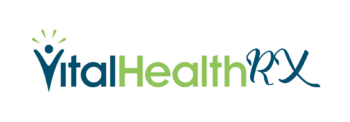When a loved one needs daily help, families often know exactly who they trust, what routines work, and how to keep life feeling dignified and familiar. New York’s Consumer Directed Personal Assistance Program (CDPAP) turns that insight into action by letting consumers—or their designated representatives—recruit, hire, train, and supervise their own caregivers, including certain family members and friends. In Suffolk County, this flexibility can be the difference between “making do” and truly thriving at home. Here are seven ways CDPAP empowers families to direct care on their terms.
1) You choose the caregiver—often someone you already trust
Traditional home care assigns aides based on agency staffing. CDPAP flips the model: the consumer (or representative) picks the caregiver. That could be an adult child, a close friend, or a trusted neighbor who already understands the person’s habits, cultural preferences, and communication style. Familiarity reduces onboarding friction, improves cooperation, and often leads to better day-to-day consistency.
2) Training is customized to real life, not just a checklist
Because families lead the training, caregivers learn exactly what matters—from the way Mom prefers her morning routine to the safest transfer method for Dad’s favorite recliner. You can prioritize what truly prevents setbacks: medication timing, hydration prompts, blood sugar checks, or dementia-friendly redirection techniques. CDPAP respects the fact that lived experience is often the best “curriculum.”
3) Schedules match your rhythms (and Suffolk realities)
Traffic on the LIE, seasonal work hours, grandkids’ school pickups—life here has patterns that don’t always fit a standard 9–5. CDPAP allows families to set practical schedules aligned with medical needs and household realities, whether that’s early morning help, evening supervision, or weekend flexibility. The result: fewer missed visits and a better alignment between support and actual need.
4) Care tasks can be more comprehensive
CDPAP permits a range of assistance—from personal care (bathing, dressing, toileting) to certain skilled tasks when appropriate training is provided and accepted. That might include simple wound care, ostomy support, or insulin administration following proper instruction. This broader scope reduces the “handoff gaps” that can occur when multiple providers each handle tiny fragments of care.
5) Accountability lives with the people who care the most
Because families recruit and supervise, accountability is direct and personal. If a task is missed, you don’t wait on hold—you address it with your caregiver swiftly. CDPAP also promotes better documentation: families often track daily activities, vitals, and symptoms more diligently when they’re the ones in charge. That real-time record becomes invaluable for provider updates and preventing readmissions.
6) Paid support for family caregivers reduces burnout
Family members frequently shoulder the load for free, juggling jobs and caregiving. CDPAP allows eligible caregivers to be compensated for the time they already devote to their loved one. That income can offset lost wages, cover transportation and supplies, and make it realistic to sustain care at home without financial freefall. When caregivers feel supported, consumers usually receive steadier, safer care.
7) Stronger clinical coordination—because your notes tell the real story
Suffolk County families using CDPAP often become the best narrators of a loved one’s health journey. Daily notes about appetite, sleep, mood, blood pressure, weight, or mobility can be shared with physicians and therapists, enabling faster treatment adjustments. Early pattern recognition—like rising edema, increased confusion, or medication side effects—helps catch issues before they escalate into ER visits.
Getting started: practical tips for Suffolk County families
- Confirm eligibility and documentation. Gather identification, insurance details, and any clinical assessments that establish need.
- Define the role clearly. Write a short description of daily tasks, safety protocols, and the escalation plan for red flags (pain spikes, falls, sudden confusion).
- Create a training plan. Note condition-specific skills to learn (safe transfers, blood sugar checks, medication prompts) and where to get instruction.
- Set a schedule that supports health goals. Align care hours with vital routines—morning meds, physical therapy exercises, meal preparation, and evening supervision.
- Build a simple reporting system. Use a shared note or app to log vitals, meals, bowel/bladder status, mood, and any symptoms. Bring these notes to appointments.
- Protect caregiver sustainability. Plan breaks, backup coverage, and sleep. Even two hours of weekly respite can prevent burnout.
- Map local resources. Transportation programs, senior centers, meal supports, and condition-specific groups can fill gaps and improve quality of life.
Suffolk families often balance long commutes, multi-generational households, and seasonal schedules. A one-size-fits-all aide assignment rarely matches that complexity. CDPAP’s consumer-directed model lets you build a care plan around real life, ensuring continuity even when work hours shift or winter weather complicates travel. It also preserves autonomy and cultural preferences—crucial for dignity, especially for those managing dementia, stroke recovery, or chronic illnesses.
For families exploring options, CDPAP is not merely an alternative—it’s a framework for leadership. You decide who provides care, when it happens, and how success is measured. That control, paired with practical compensation and flexible training, turns home into a safer, more stable place to heal.
If you’re comparing programs, consider how each option supports your ability to direct care, honor routines, and respond quickly when health needs change. For many, CDPAP offers the most alignment with the reality of day-to-day caregiving—and the best chance of keeping loved ones safely at home with the people they trust most in Suffolk county home care.

